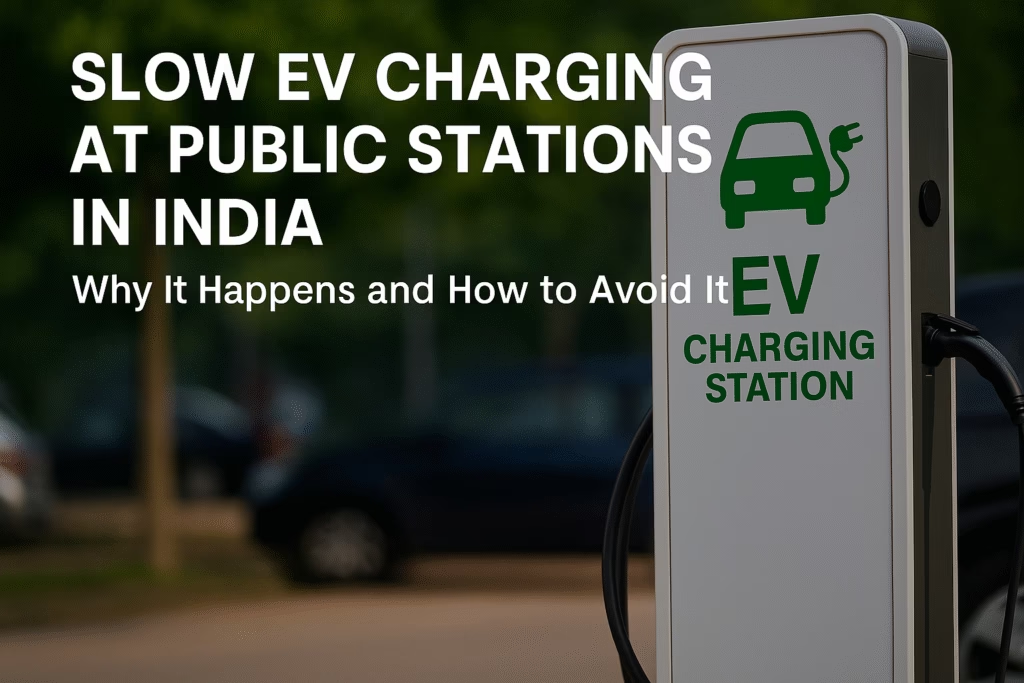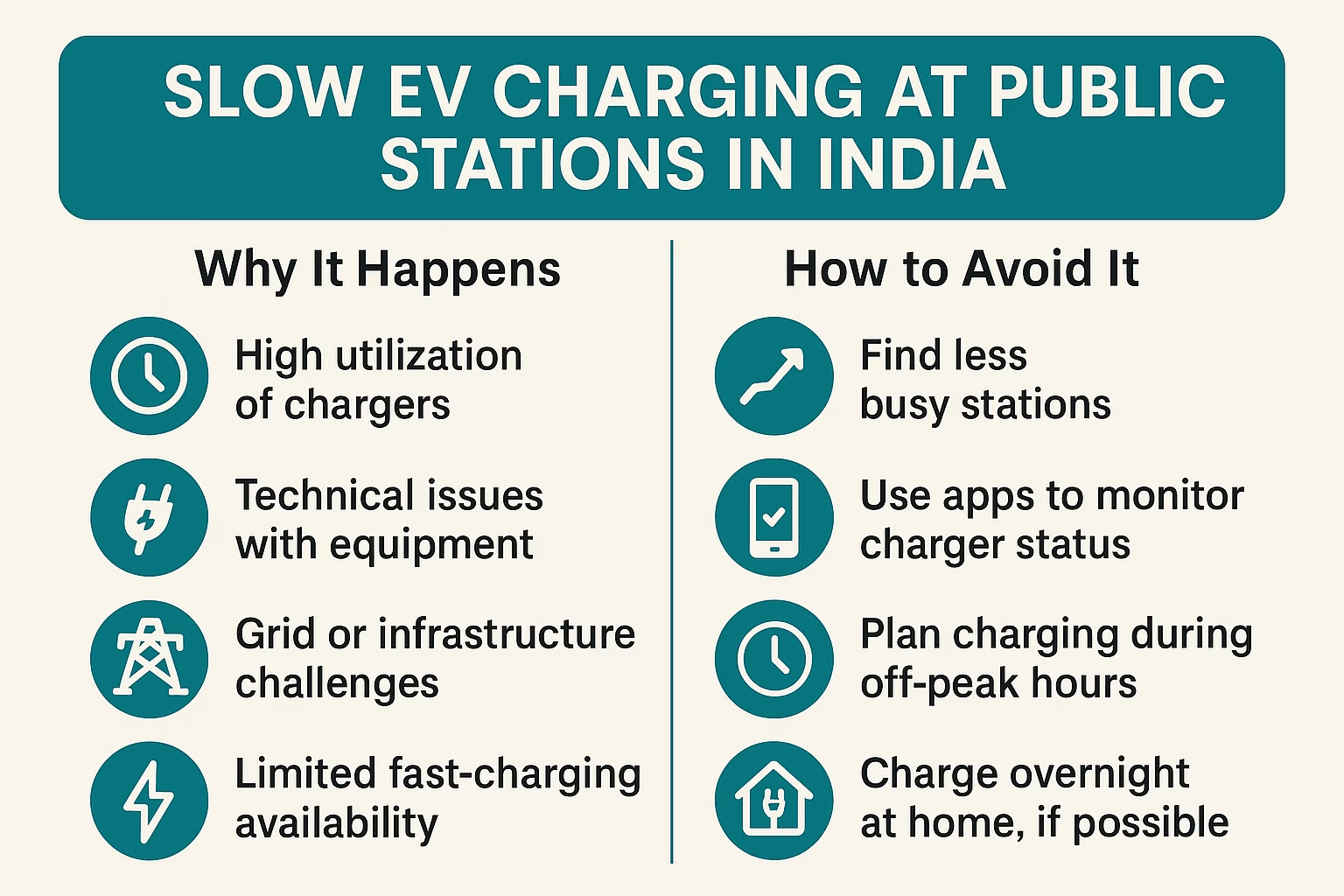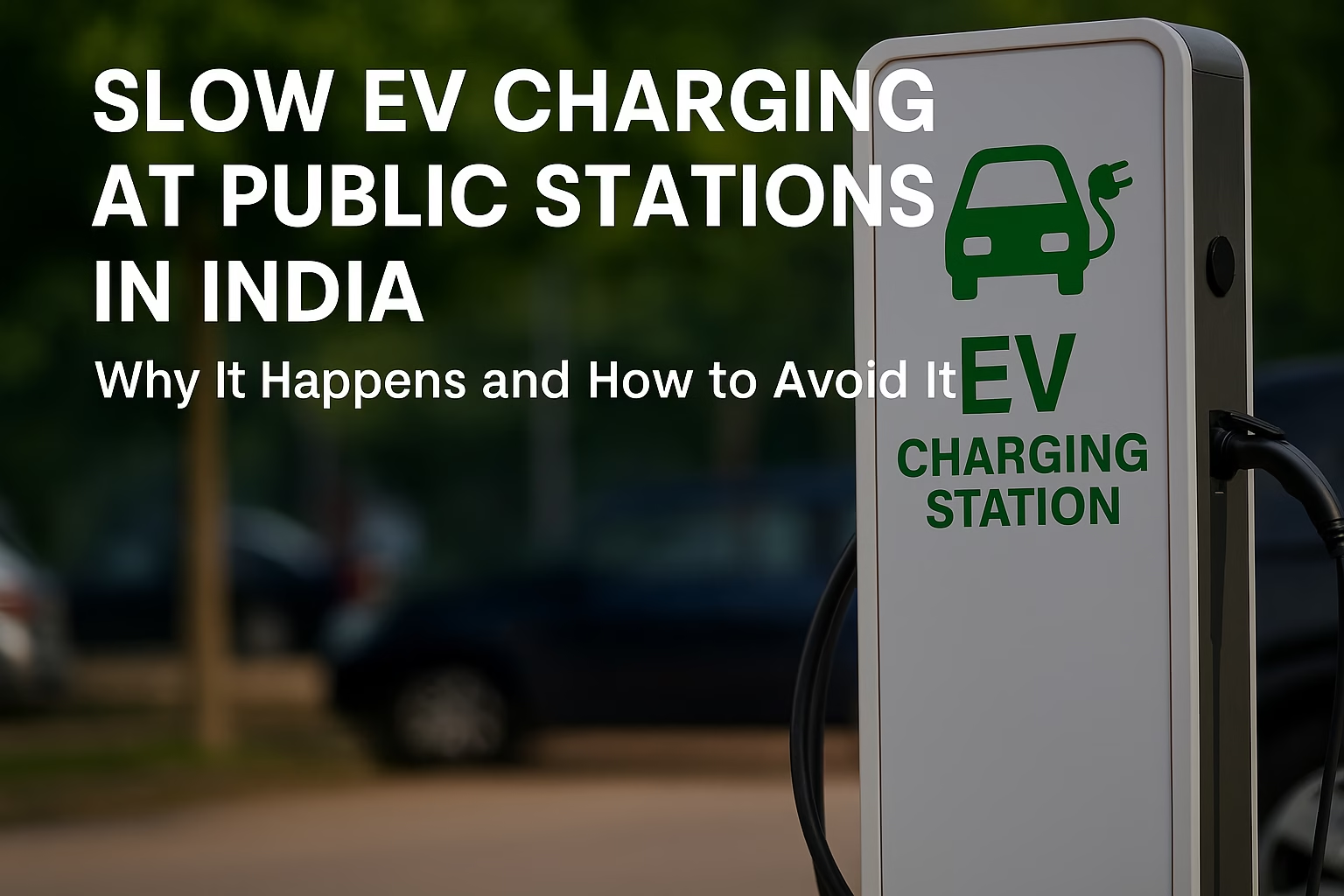1. Introduction
As electric vehicle adoption grows across India, drivers increasingly depend on public chargers—yet a frustrating pattern has emerged: many public charging stations simply aren’t functional. From stalled charging sessions to dead fast‑chargers, the problem isn’t just slow EV charging at public stations in India—it’s often no charging at all. This article breaks down the real causes of slow EV charging at public stations in India, and guides you on how to avoid hassle during EV trips.

2. Why Users Are Searching
Search terms like “slow EV charging at public stations in India”, “charging station not working”, and “EV charger failures India 2025” are trending—because everyday users face this issue repeatedly, yet answers are few and vague.
Xiaomi YU7 Electrified — A Serious Tesla Challenger
3. Reality Check: What’s Behind Slow EV Charging at Public Stations in India
a. Charging Infrastructure Growth vs Functionality
India’s public charger count jumped fivefold from FY22 to early FY25. Still, there’s only one charger for every 235 EVs, often leading to overcrowding and idle stations that don’t work when needed.
b. Underutilisation & Poor Maintenance
Reports show utilization rates under 10%, even in metro areas Chargers are often broken, unserviced, or vandalized—especially overnight or in low-security zones. That leads to even working chargers being offline.
c. Lack of Standardisation
Many chargers use outdated or incompatible connector standards like Bharat DC‑001 or CHAdeMO—even though most newer EVs use CCS2, causing a mismatch and resulting in slow EV charging at public stations in India or no charging at all.
d. Power Grid & Energy Issues
Grid instability can disrupt charger output or cause voltage spikes. Without smart load management, high demand leads to breakdowns and accidents—further limiting charger availability.
e. Investment Vs ROI Gap
Setting up charging stations requires significant capex, but many operators can’t recover costs due to low utilization and maintenance gaps. Without connectivity and consumer trust, chargers remain seldom used.
f. Payment & App Fragmentation
Different charge point operators use different apps and wallets. Installing multiple apps and keeping track of credits is frustrating. Tech glitches—like server downtime or app failure—lead to failed sessions and fuel user frustration.
g. Vandalism & Security Lapses
Chargers at public sites— petrol stations, parking lots—face vandalism or theft. No CCTV or staff means offline equipment stays unrepaired, exacerbating the slow EV charging at public stations in India crisis.
4. Firsthand Reports from EV Users
“Success Rate: Only 1 out of 5 charging attempts works.”
— Nexon EV Owner on Reddit, describing frequent charger failures due to non‑functional ports.
“Some stations listed were out of service, forcing me to wait 40 mins or give up.”
— Another Redditor describing hidden offline chargers.

5. How to Avoid Slow EV Charging Struggles
✅ Use Official Apps & Check Status
Install provider apps (e.g. Tata Power EZCharge, Jio-BP), and check charger status before you start your trip.
✅ Carry Multiple Payment Options
Have UPI, card, or wallet options in case one fails. Slow EV charging at public stations in India often stems from payment refusal.
✅ Avoid Peak Hours
High traffic leads to long queues. Try charging before 10 am or after 6 pm if possible.
✅ Prefer Fast-Charger Hubs
Mega charger stations like those backed by Tata Motors often have backup and support, offering better uptime.
✅ Learn Basic Troubleshooting
Power-cycle the gun, check cable seating, or try alternate plug if one dock fails. If a station repeatedly fails, report via app to help system logs.
✅ Report Malfunctioning Chargers
Send feedback via app. It helps operators identify and fix broken stations faster.
✅ Map Your Route with Social Help
Use community platforms (e.g. Plugshare, Reddit EV groups) to confirm working chargers. Peer feedback helps avoid dead stations everyone complains about.
6. What Needs to Change—System Fixes
- Unified Charging Standards Needed
India’s fragmented connector system must align (e.g. with UEI/Unified Energy Interface, similar to UPI) for seamless use across platforms. - Real-Time Remote Monitoring
Charge point operators need dashboards to detect failures instantly. Without smart systems, slow EV charging at public stations in India will stay a persistent issue. - Policy-Backed Maintenance Mandates
Regulators should enforce uptime targets, penalties for vandalism-related downtime, or installation quotas tied to operation guarantees. - Better Grid & Load Management
Incorporate solar-powered chargers, generators, or battery storage to avoid grid instability and ensure consistent charging services (Reliable Charge, Reddit)). - Security & Site Monitoring
Install cameras, lights, and regular audits at charger sites to prevent vandalism and ensure functional availability, especially at night.
7. Government & Corporate Plans
- Tata Motors Plans to Expand to 400,000 Chargers
Including 30,000 new public points and Mega Charger fast zones across 500 locations—aiming to alleviate some issues causing slow EV charging at public stations in India. - PM E-Drive & FAME II Schemes
Targeting over 22,000 fast chargers and subsidies for installers. But many existing chargers still remain unusable due to lack of intelligent management and maintenance.
8. Summary Table
| Problem Area | Root Cause | What You Can Do as a User |
|---|---|---|
| Slow or No Charging | Faulty charger or low visibility | Check app status, report issue, use peer networks |
| Interrupted Payment | App or wallet failure | Carry multiple payment options |
| Incompatible Connector | Different charger standards | Verify connector type before arriving |
| Station Down at Night | Power cut or vandalized equipment | Use well-lit hubs, avoid isolated stations |
| Long Waits and Uptime Issues | Low usage + poor maintenance | Use fast-charger hubs or plan alternative backups |
9. Conclusion
If you’re often left stranded searching for a working charger—or experiencing slow EV charging at public stations in India—you’re not alone. The infrastructure challenge is less about numbers and more about reliability, compatibility, and smart management.
This article should help you understand why the issue persists, how to avoid frustration, and what must change to turn India’s blueprint into a sustainable EV experience.

